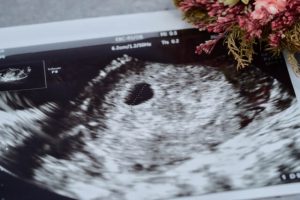Introduction
Childbirth is not something experienced multiple times in life. Seeing that the total fertility rate in the year Reiwa 3 (2021) was 1.30, many individuals may experience childbirth only once or twice in their lifetime. You might wonder, “What are the different methods of childbirth?”
Memories of childbirth stay vivid in one’s memory for decades. To make the precious moment of childbirth satisfactory, it’s important to thoroughly understand the types and characteristics of each delivery method.
Some hospitals may not offer certain delivery methods, or additional fees may be required, causing insufficient coverage by the childbirth and childcare lump sum benefit. If you have a preferred method of delivery, it’s important to confirm it in advance.
Vaginal Delivery
Among the childbirth methods performed in Japan, the most common is vaginal delivery. Approximately 80% of deliveries are conducted through vaginal delivery.
When you hear about vaginal delivery, you might imagine a natural process of waiting for labor pains to come and then going to the delivery table when the cervix is sufficiently dilated. However, as I will introduce shortly, there are several types of vaginal delivery.

Normal Delivery
It is a method in which the baby is born through the vagina. It is also called natural childbirth. In the past, home births were common, but recently, giving birth on a delivery table has become more popular.
When the intervals of labor pains become shorter and the cervix is fully dilated, it is time for delivery. Since anesthesia is not used, the mother will experience strong pain, but it is known as the most common delivery method in Japan.
Depending on the condition of the baby and the mother, anesthesia may be used or suction may be performed during the process. Therefore, it is not necessarily always a completely natural birth until the end.
Freestyle Delivery (Active Birth)
Freestyle delivery, also known as active birth, is a method where the mother gives birth in a position that feels comfortable to her.
You might imagine the typical image of giving birth on a delivery table, but with freestyle delivery, it’s possible to give birth while on all fours or leaning on a chair, for example.
Water births using a bathtub or a dedicated warm water pool, as well as upright positions like sitting up, are also known as forms of freestyle delivery.
Painless/Water Pain (Anesthesia) Delivery
Painless (Anesthesia) delivery is a method that alleviates labor pains and discomfort during childbirth by using anesthesia. It involves performing epidural anesthesia or spinal anesthesia to numb the lower body and reduce pain sensation.
The term “wa-tsu” is often used interchangeably with painless delivery. However, depending on the hospital, it may also refer to childbirth methods such as the Sophrology method or the Lamaze method, so it’s advisable to confirm whether anesthesia will be used in advance.
Painless delivery is widely accepted in countries like the United States and France, but in Japan, it’s performed only in about one out of every twenty deliveries.
There are drawbacks to painless delivery, such as a slower progression of labor. However, the benefits include reducing fear of childbirth, preventing panic, and minimizing physical exhaustion.
While some hospitals offer painless delivery for free, it typically incurs additional charges. Additionally, not all hospitals provide this option, so it’s important to be aware of this.
Induced Delivery, Augmented Delivery
Induced delivery is a method of artificially promoting childbirth using labor-inducing agents such as oxytocin or a balloon. It is performed when labor fails to progress despite the rupture of membranes or when there are no signs of labor even one week after the due date.
Generally, induced delivery is not performed based solely on the mother’s preference but is rather determined by the doctor considering the well-being of both the mother and the baby. In cases where there is a history of previous cesarean section or conditions like placenta previa, cesarean section may be performed instead of induced delivery.
Vacuum Extraction, Forceps Delivery
Vacuum extraction and forceps delivery are methods of childbirth that involve using instruments such as a vacuum extractor or forceps. In vacuum extraction, a suction cup is attached to the baby’s head to assist in delivery. Forceps delivery involves using forceps to grip the fetal head and pull it out.
These methods are performed when labor progress halts or when the mother’s physical strength significantly decreases. While the baby’s head shape may temporarily become elongated, it usually resolves over time, so there’s typically no major concern.
Similar to induced or augmented delivery, vacuum extraction and forceps delivery are determined by the doctor’s judgment rather than solely by the mother’s preference.
Planned Delivery
Planned delivery is a childbirth method where the delivery date is predetermined, and labor is induced artificially. There is also a method called planned painless delivery, where anesthesia is used to alleviate pain when labor pains intensify due to the administration of labor-inducing agents.
This method is suitable for individuals who have a preference for their child’s birth date or who wish to plan childbirth due to family circumstances. It is also suitable for those who feel fearful about not knowing when labor will begin.

Cesarean Section
A cesarean section, or C-section, is performed when vaginal delivery is difficult due to reasons such as the baby being in breech position or having twins (multiple pregnancies). The number of pregnant women undergoing cesarean section is gradually increasing, and currently, approximately one in every five deliveries is done via C-section.
There are two methods for making an incision in the abdomen: transverse incision and vertical incision. A transverse incision makes the scar less visible under clothing, while a vertical incision has the advantage of less blood loss and shorter time to deliver the baby. Whether a transverse or vertical incision is chosen depends on the hospital.
Scheduled Cesarean Section
Scheduled cesarean section, or planned cesarean section, is performed when it’s already known that vaginal delivery is not suitable. A predetermined date is set for the surgery. If by around the 37th week of pregnancy it’s determined that vaginal delivery is not appropriate, the surgery is typically scheduled around the 38th week of pregnancy.
In the case of multiple pregnancies, the surgery may be performed even earlier. Sometimes the exact timing of the surgery isn’t known until the day of the operation, while other times there is a predetermined time frame.
Emergency Cesarean Section
Emergency cesarean section is a cesarean section that is performed urgently based on the condition of the baby or the mother. It is conducted in situations such as prolonged weak contractions leading to halted labor progress, decreased fetal heart rate, or placental abruption.
Being informed suddenly about the need for a cesarean section when vaginal delivery was planned may cause anxiety and lack of preparedness. However, healthcare professionals such as doctors and midwives will provide strong support, so there is no need to be overly frightened. Also, if labor begins earlier than the scheduled date for a planned cesarean section, it would also be considered an emergency cesarean section.
Fetal Condition Testing with NIPT (Non-Invasive Prenatal Testing)
NIPT is a prenatal screening test to determine whether the baby has chromosomal abnormalities before birth. Once pregnancy is confirmed through an ultrasound scan, the test can be performed.
Since the test only requires a blood sample from the mother, there is no need to worry about its effects on the fetus. For Trisomy 21 (Down syndrome), the test has a high accuracy rate with sensitivity and specificity both at 99.9%.
At Hiro Clinic NIPT, with over 28,000 tests conducted, results can be delivered in as little as 2 days. The test can also be conducted for twins. If you have any concerns, please feel free to contact us for a consultation.
Conclusion
There are two main methods of childbirth: vaginal delivery and cesarean section. Recently, due to the spread of the novel coronavirus, it has become difficult for partners and children to be present during childbirth, which may cause anxiety for many expecting parents.
Depending on the conditions of the baby and the mother, it may not be possible to have the desired type of delivery to prioritize safety. However, thinking about which method of childbirth you prefer ahead of time is essential, not only for the sake of making peace with your feelings amidst the challenges of limited presence but also to ensure a smoother experience overall.
To create even a little space to enjoy childbirth, I hope you can take this opportunity to become interested in the types of childbirth methods.
【References】
- Ministry of Health, Labour and Welfare – Overview of the Annual Population Dynamics Statistics Monthly Report (Estimated Figures)
- Ministry of Health, Labour and Welfare – Understanding the Actual Situation of Painless Delivery and Establishing a Safety Management System
- Nichiban – What Is a Cesarean Section?
Article Editorial Supervisor

Dr Hiroshi Oka
NIPT specialist clinic, MD
Graduated from Keio University, School of Medicine
 中文
中文






















